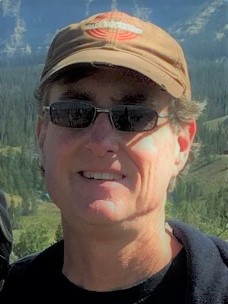Research
Prof. Toohey's research addresses the role of trace gases and aerosols on climate, atmospheric oxidation, and air quality. He primarily develop and deploy instruments for in situ measurements from the ground, balloons, and aircraft. He has participated in over 65 field campaigns to examine topics such as stratospheric ozone depletion over the Arctic, the impact of rockets on stratospheric chemistry, long-range transport of pollutants, and the role of aerosols in modification of cloud properties. In addition to many sites throughout the continental United States, he has conducted fieldwork in Alaska, Hawaii, New England, Antarctica, Norway, Sweden, Spitsbergen, New Zealand, Australia, Mexico, Chile, South Korea, and the U.S. Virgin Islands. For more details, see Web of Science, Google Scholar, Academia.edu, ResearchGate. His lab is located in a far remote corner on the second floor of the Sustainability, Energy, and Environment Laboratory (SEEL) on East Campus.
In 2023 Prof. Toohey will be participating in the last of three NASA IMPACTS field intensives, the key goal of which is to improve understanding of the microphysical (cloud formation) processes that lead to formation of snowbands. This project was postponed in 2021 due to lockdowns for Covid-19. Hence, following those lockdowns he kept busy by assisting colleagues in the School of Engineering to study sources and transport of particles associated with activities that potentially spread Covid-19. A good fraction of that time was also spent on repairing and calibrating finicky cavity ringdown spectrometers and improving the design of a counterflow virtual impactor for measurements of condensed water and cloud droplet residuals.
Most exciting, Prof. Toohey is currently building ultra-lightweight (<2-lb) laser-absorption spectrometers for measurements of water vapor and methane on small unattended aerial vehicles and high-altitude balloons. These instruments will be useful for characterizing small-scale variations - of order of fractions of a meter - for measurements of surface fluxes, and, potentially, as a fast-response, high-accuracy alternative to dropsondes that currently use semiconductors. The first test flight is planned on a stratospheric balloon in Summer, 2023.
Teaching
Prof. Toohey's first experience as a lecturer was teaching a mechanics laboratory for non-majors at Cal State Fullerton in 1980 while studying physics, chemistry, and mathematics. Since then he has taught two dozen different courses in fields ranging from fundamental physics and chemistry, remote sensing, and instrumentation lab, to global ecology, sustainability, and science policy. Many of these courses he developed and taught for the first time. A full list as of 2023 can be found here. Prof. Toohey has also taught on Semester at Sea and while serving as an Erskine Fellow at the University of Canterbury, New Zealand. He is currently completing a compilation of all of his lecture notes, slides, homeworks, and exams, of which there several thousand pages. In 2022 he edited a complete set of video lectures for the class he has taught most often, "Our Changing Environment", an introduction of Earth System Science, which dates back to courses he taught at Harvard and UC Irvine.
Science Policy
Prof. Toohey has been involved with issues of science policy dating back to his work on ozone-depleting substances in the 1980s and 1990s. He has been a co-author of multiple assessments of stratospheric ozone and impacts of aircraft on air chemistry and climate. In 2011-2012 he served as a Jefferson Science Fellow at the U.S. Department of State in the Bureau of East Asian and Pacific Affairs, working on issues related to energy and green growth for APEC. He organized a high-level meeting on Open Governance and Economic Growth, chaired by the Secretary of State, served as a delegate for the United States at the 10th APEC Energy Ministerial Meeting, and organized an APEC Workshop in Singapore on the use of observations to address resilience and disaster response. Following that year of service, from 2013 to 2015 he helped a group of international scientists develop a sucessful proposal for hosting a hub of the Future Earth Secretariat in the United States and for linking educators and researchers in Colorado and in the United States working in the fields of sustainability and global development. In 2019 he co-authored an article calling for awareness of the role of increased emissions of rockets on stratospheric circulation, and he is interviewed often about the potential impacts of space launch activities on ozone and climate.
Maybe of further interest
Photo: 2011 Jefferson Science Fellows
Read: 2014 Jefferson Science Fellowship brochure
Read: My Year as a Jefferson Science Fellow
Watch: Understanding Climate Change and the Redistribution of Heat, Winds, Water, and Worries (U.S. Center, Doha Conference, November 2012)
Watch: The Canary in the Coal Mine: Why the Stratosphere is Still Relevant (U.S. Dept. of State, April 2012)
Read: The Coming Surge of Rocket Emissions (EOS Transactions of the American Geophysical Union, September 24, 2019)
Watch: Elon Musk: CO2 Saint or Sinner? (Financial Times, News in Depth, June 18, 2021)
Read: The Black Carbon Stain of Rocket Launches (Canada's National Observer, June 30. 2022)
This page was last updated June 10, 2023
